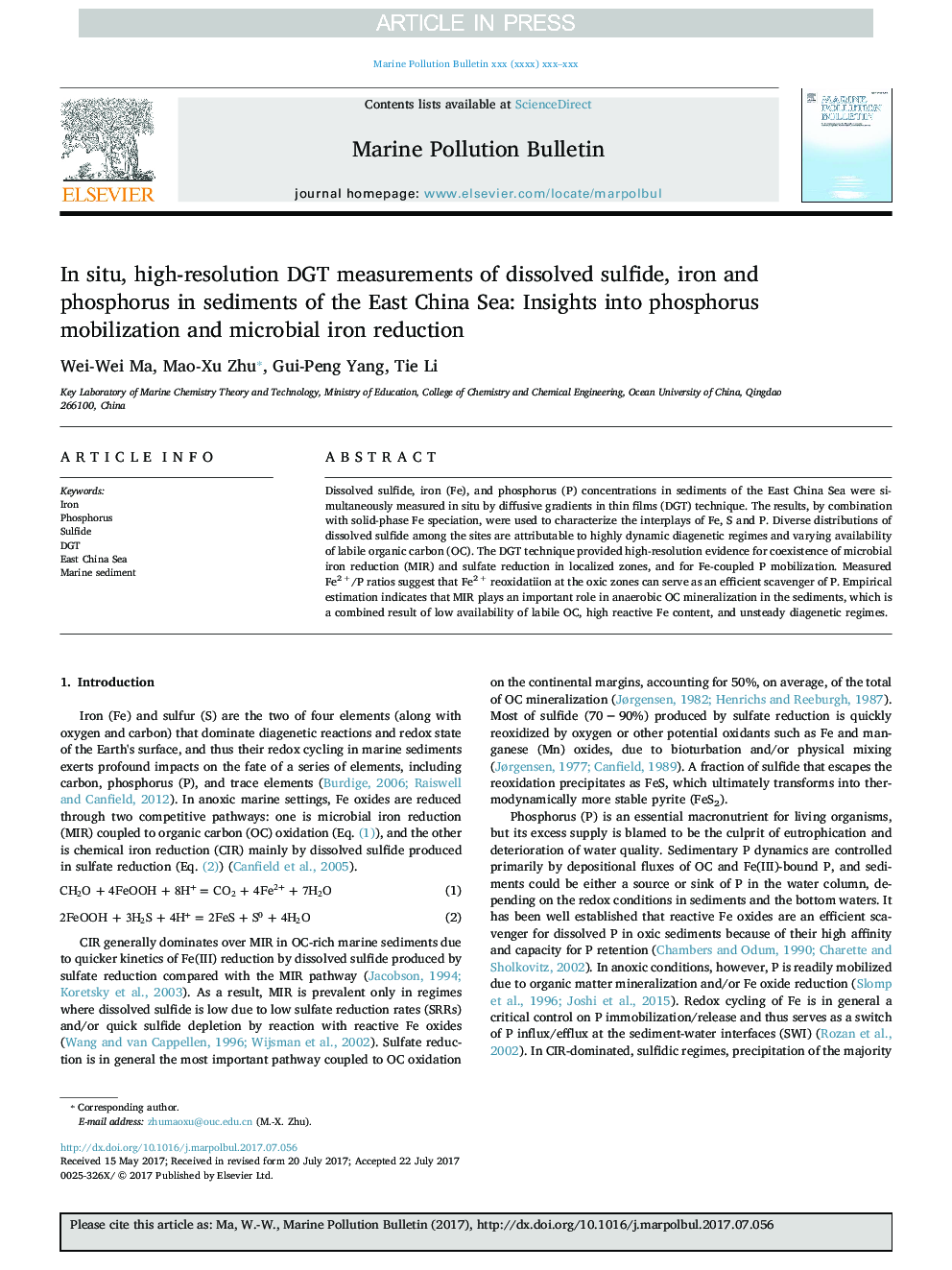| Article ID | Journal | Published Year | Pages | File Type |
|---|---|---|---|---|
| 8872389 | Marine Pollution Bulletin | 2017 | 11 Pages |
Abstract
Dissolved sulfide, iron (Fe), and phosphorus (P) concentrations in sediments of the East China Sea were simultaneously measured in situ by diffusive gradients in thin films (DGT) technique. The results, by combination with solid-phase Fe speciation, were used to characterize the interplays of Fe, S and P. Diverse distributions of dissolved sulfide among the sites are attributable to highly dynamic diagenetic regimes and varying availability of labile organic carbon (OC). The DGT technique provided high-resolution evidence for coexistence of microbial iron reduction (MIR) and sulfate reduction in localized zones, and for Fe-coupled P mobilization. Measured Fe2Â +/P ratios suggest that Fe2Â + reoxidatiion at the oxic zones can serve as an efficient scavenger of P. Empirical estimation indicates that MIR plays an important role in anaerobic OC mineralization in the sediments, which is a combined result of low availability of labile OC, high reactive Fe content, and unsteady diagenetic regimes.
Related Topics
Physical Sciences and Engineering
Earth and Planetary Sciences
Oceanography
Authors
Wei-Wei Ma, Mao-Xu Zhu, Gui-Peng Yang, Tie Li,
